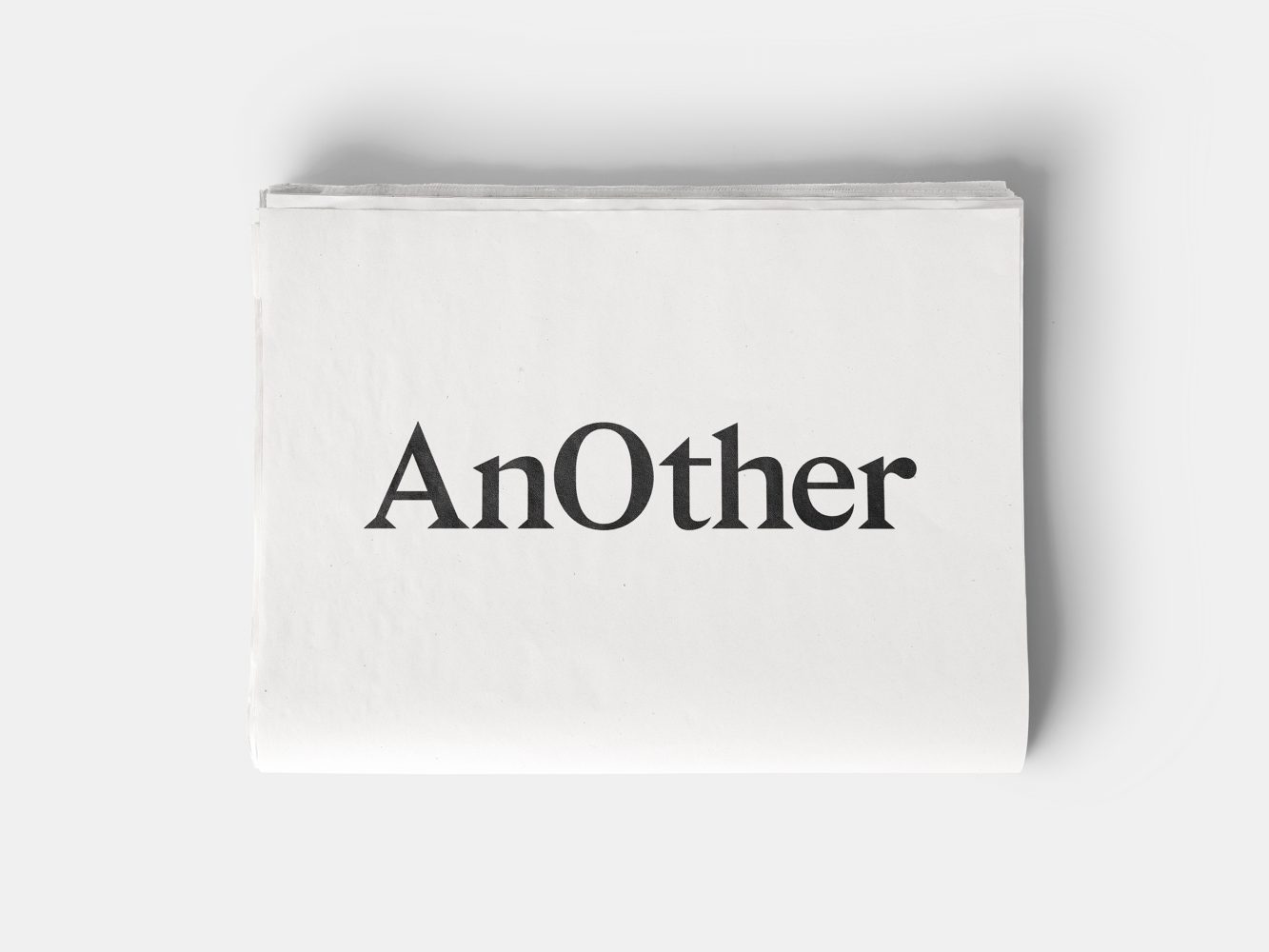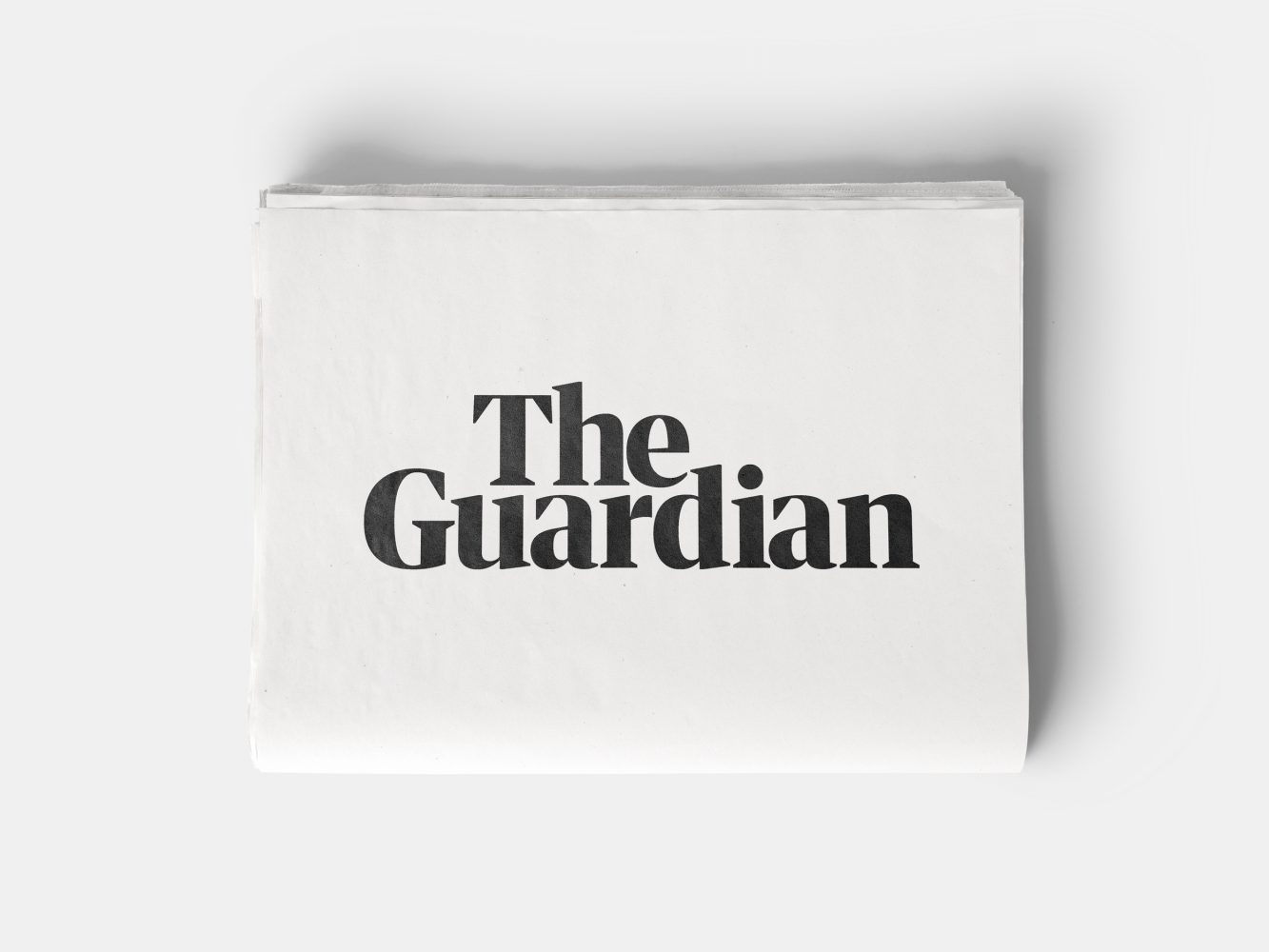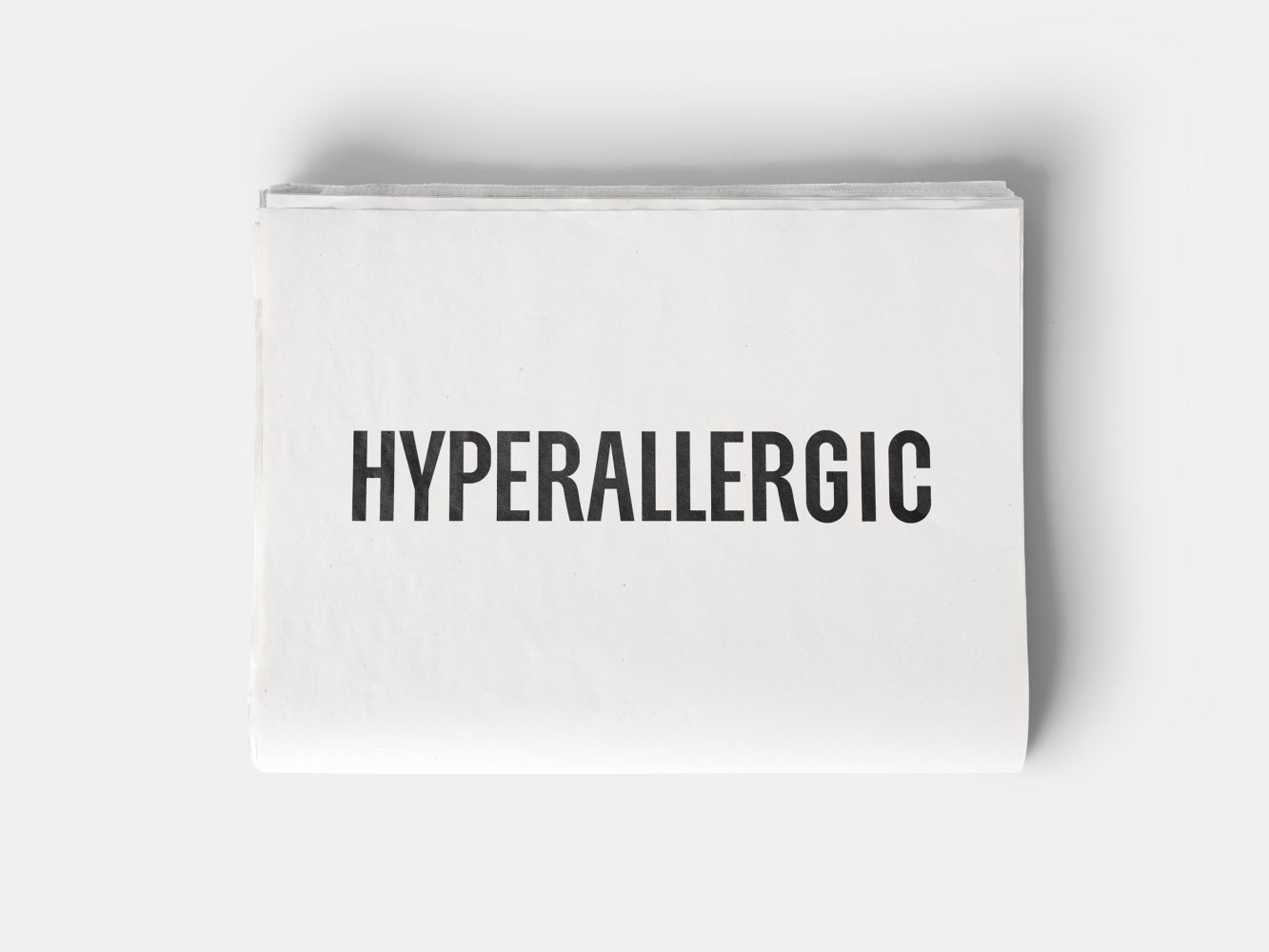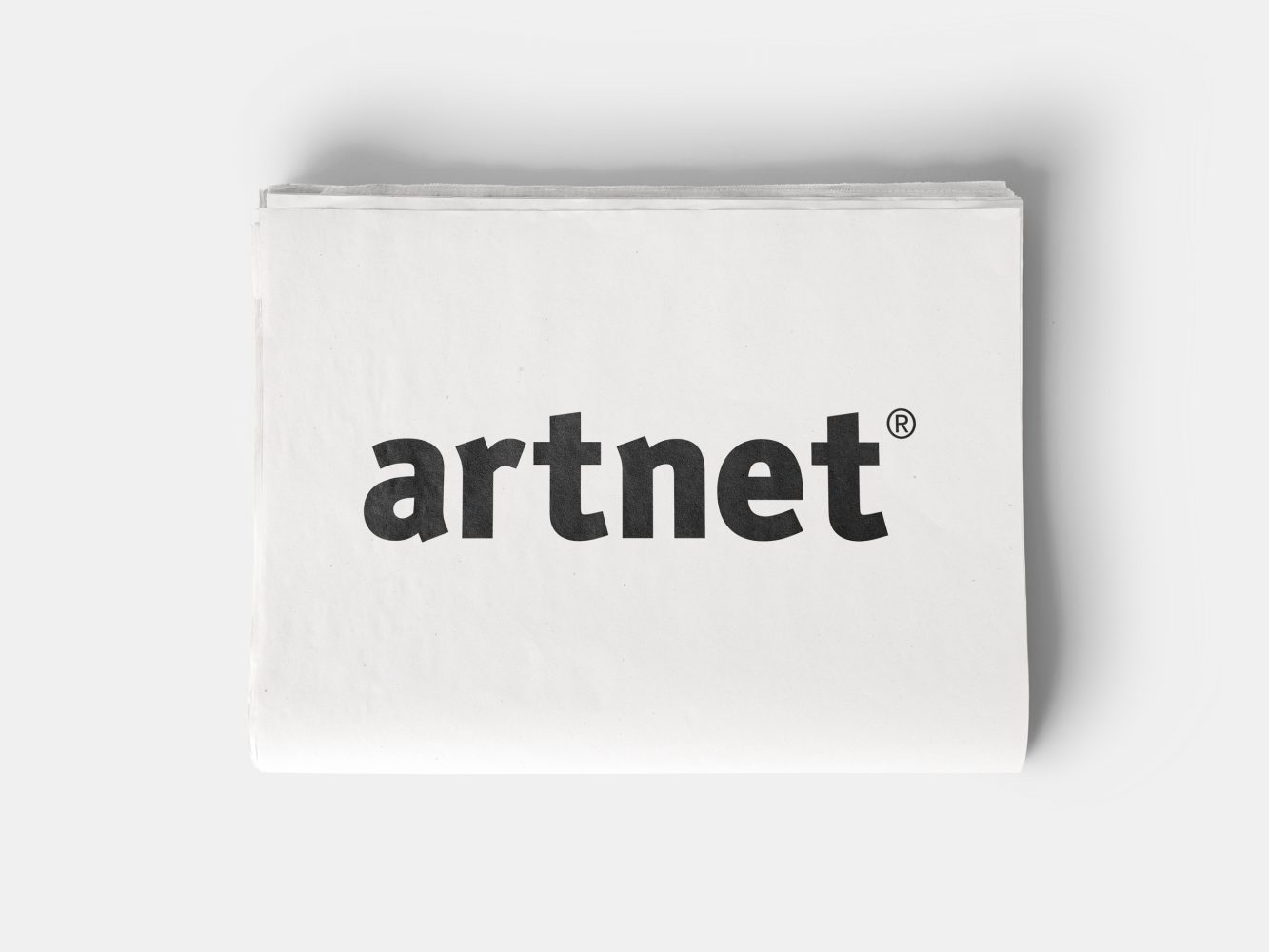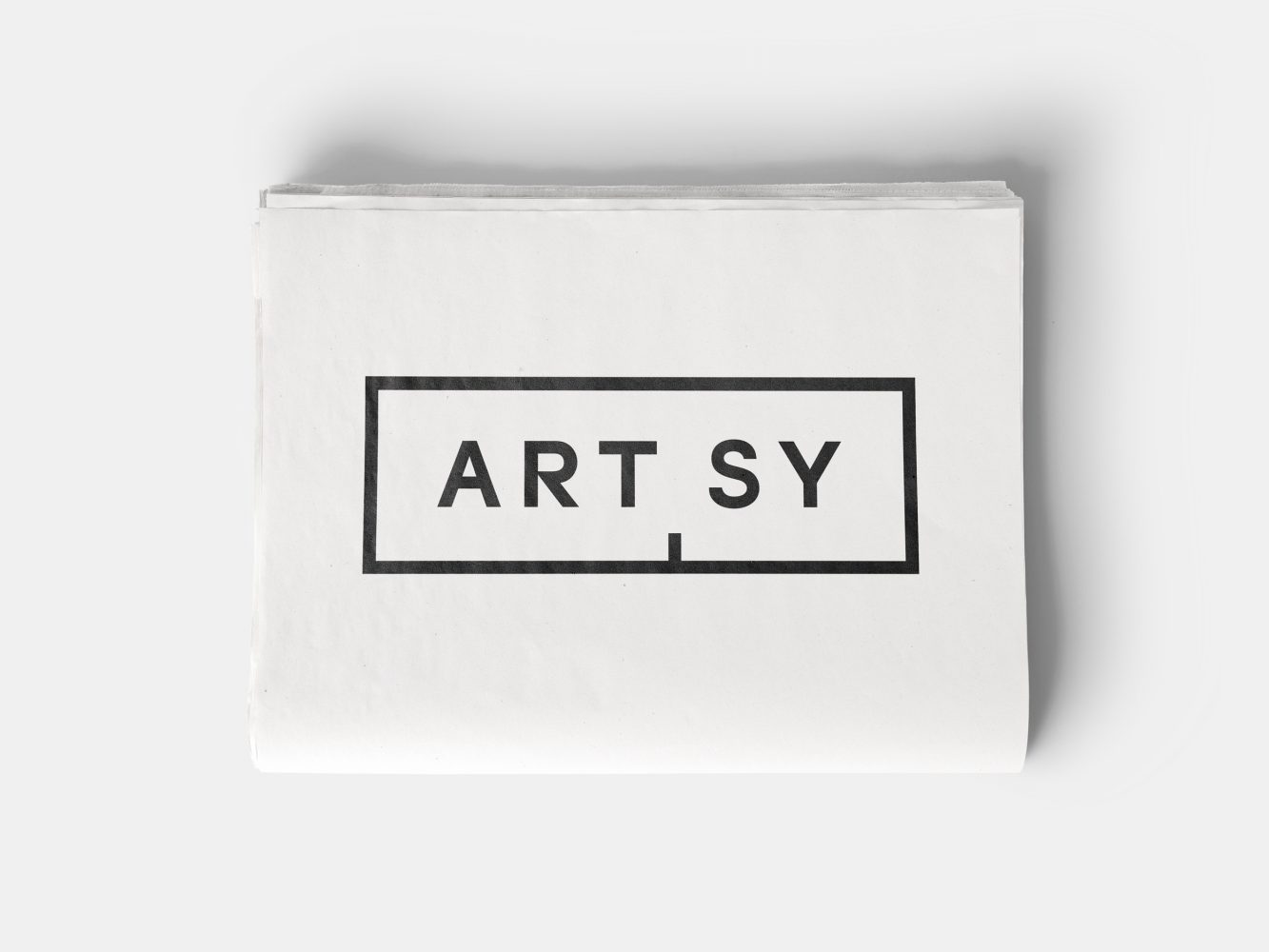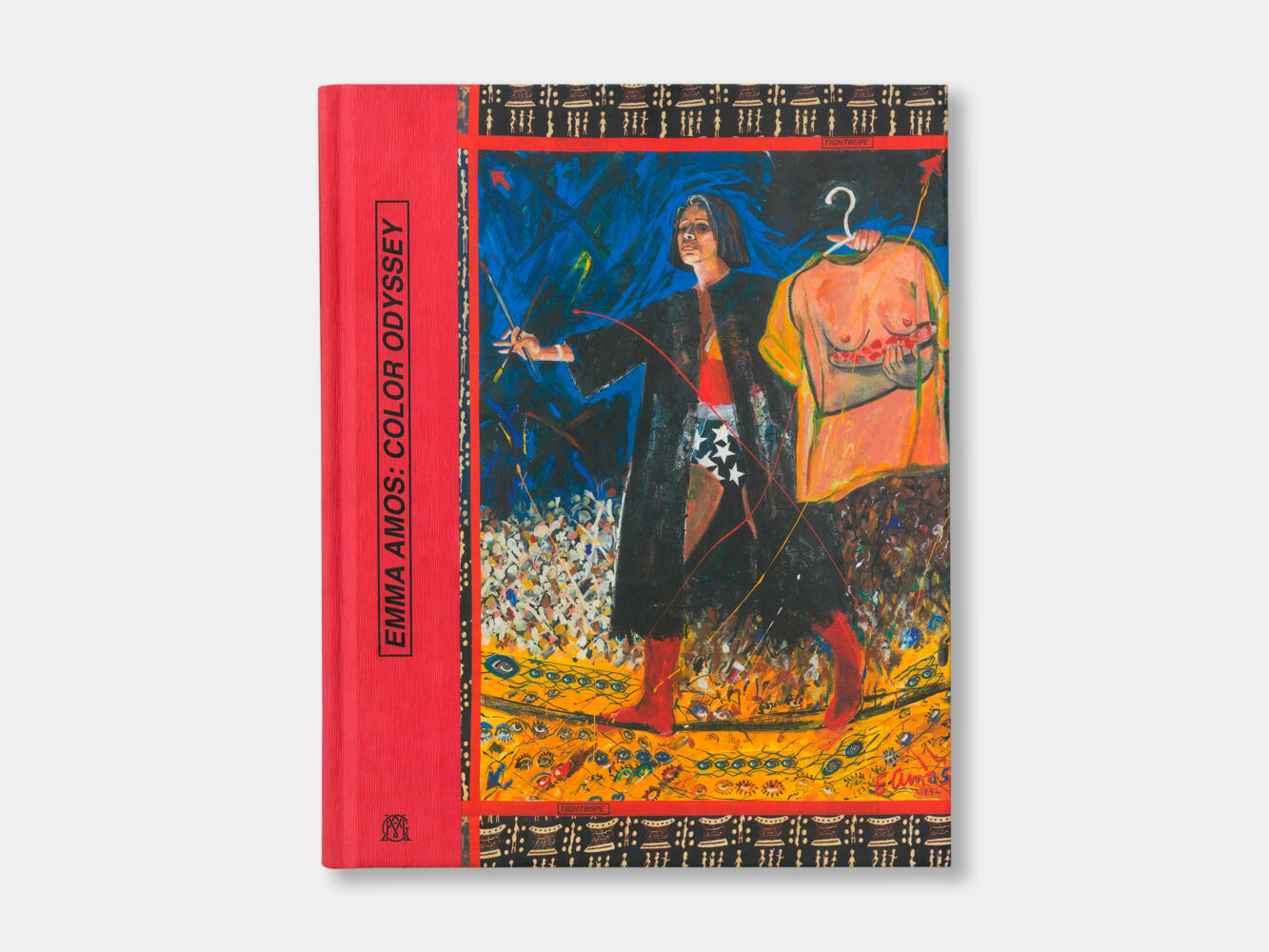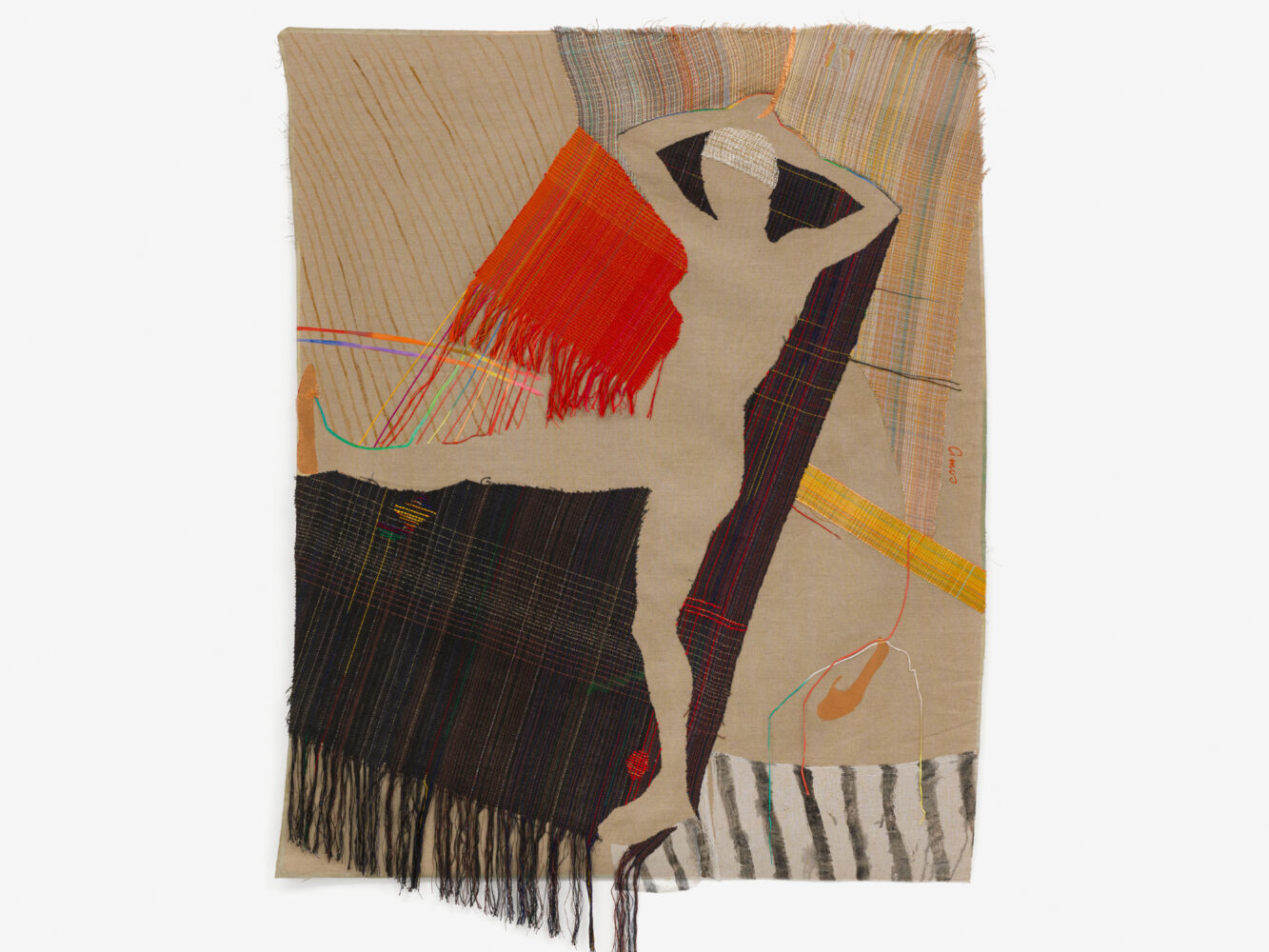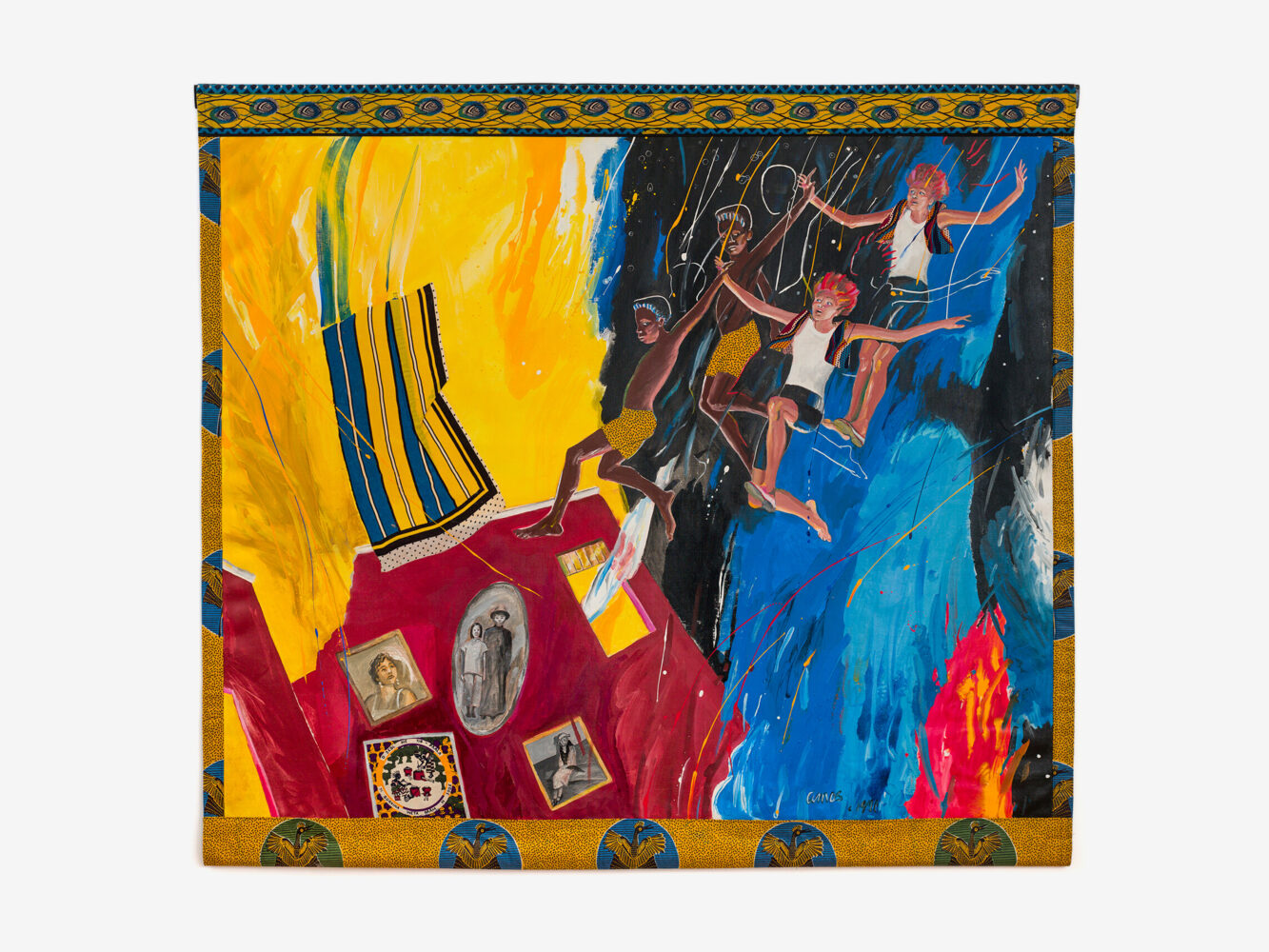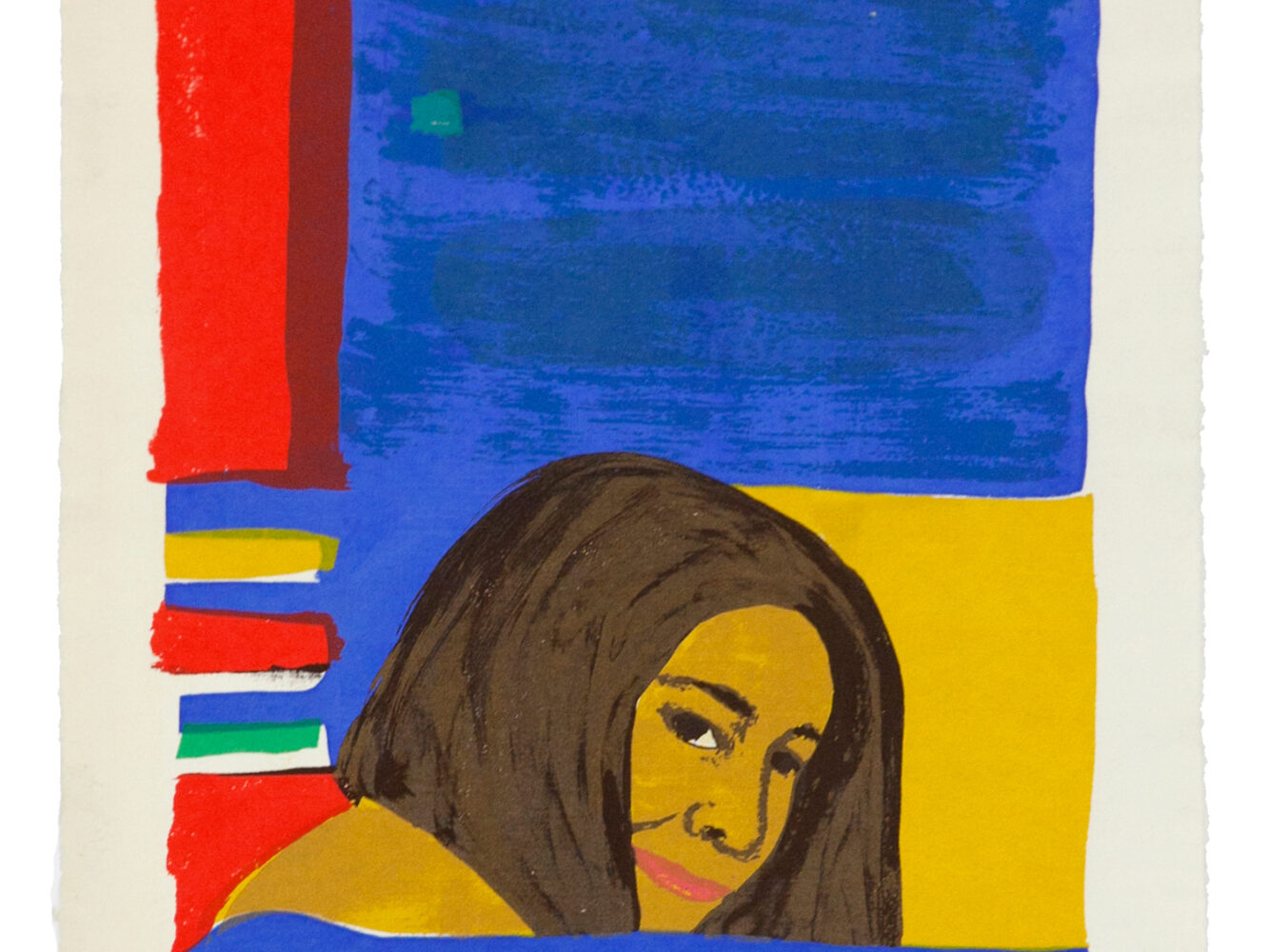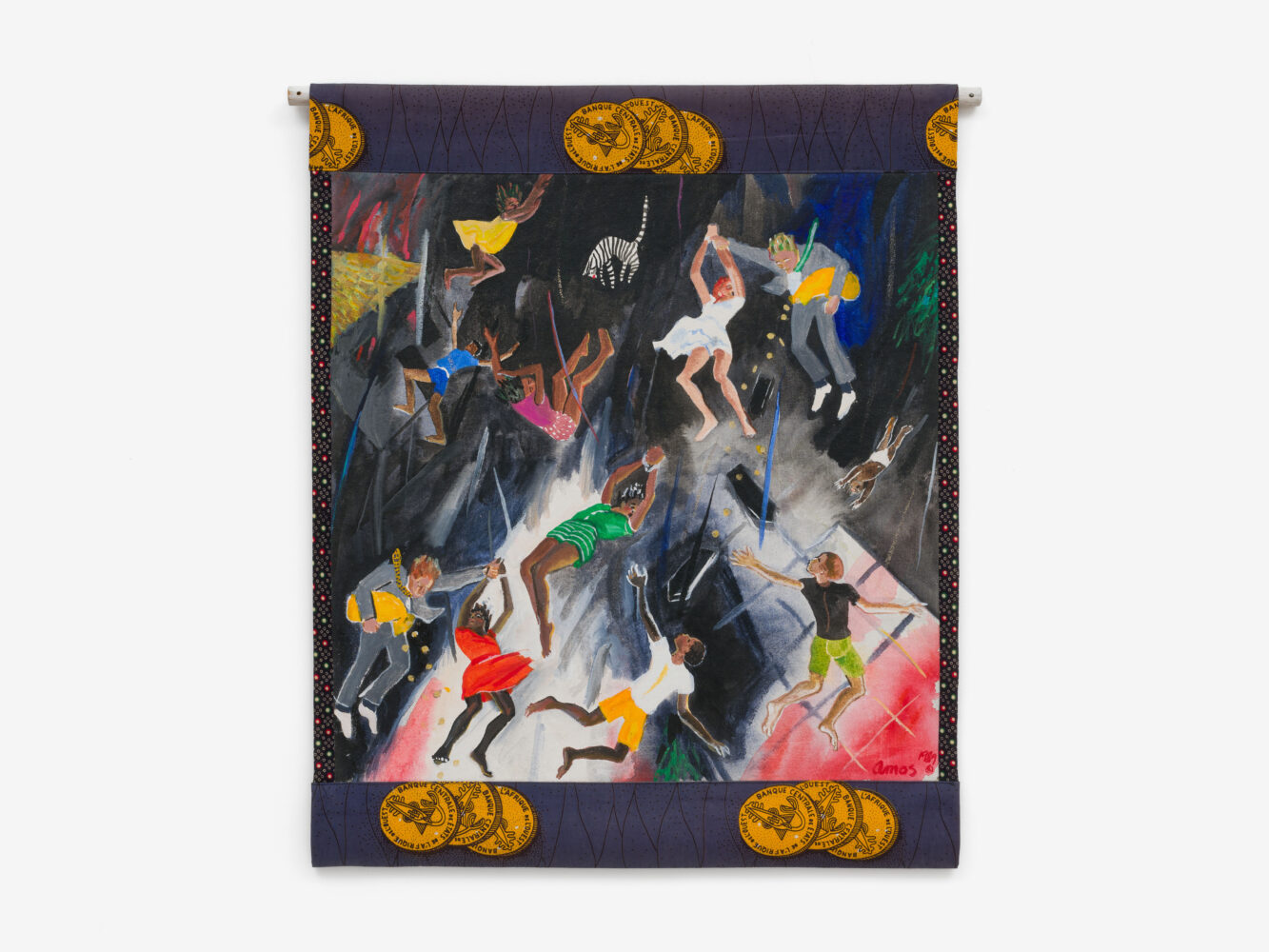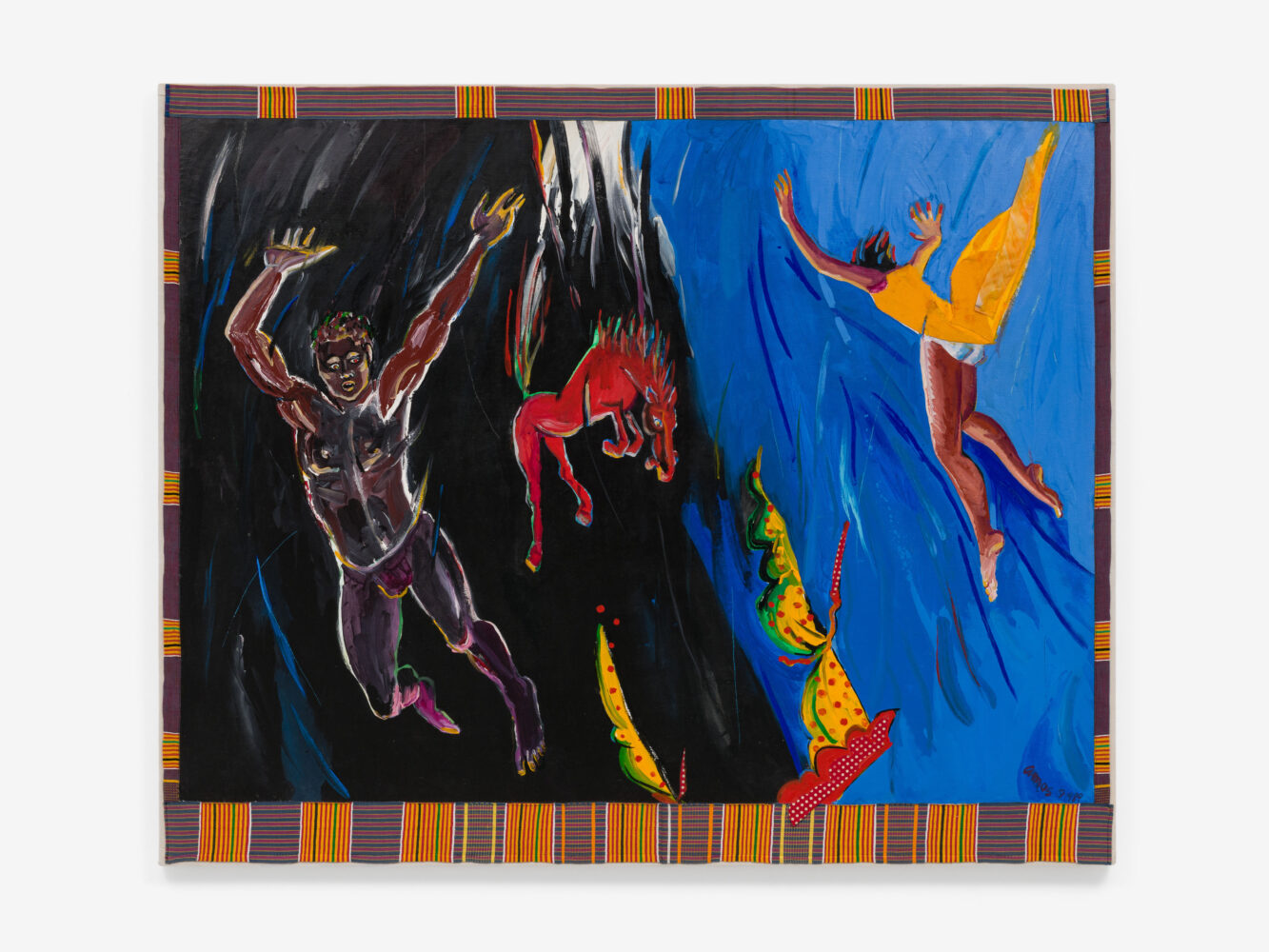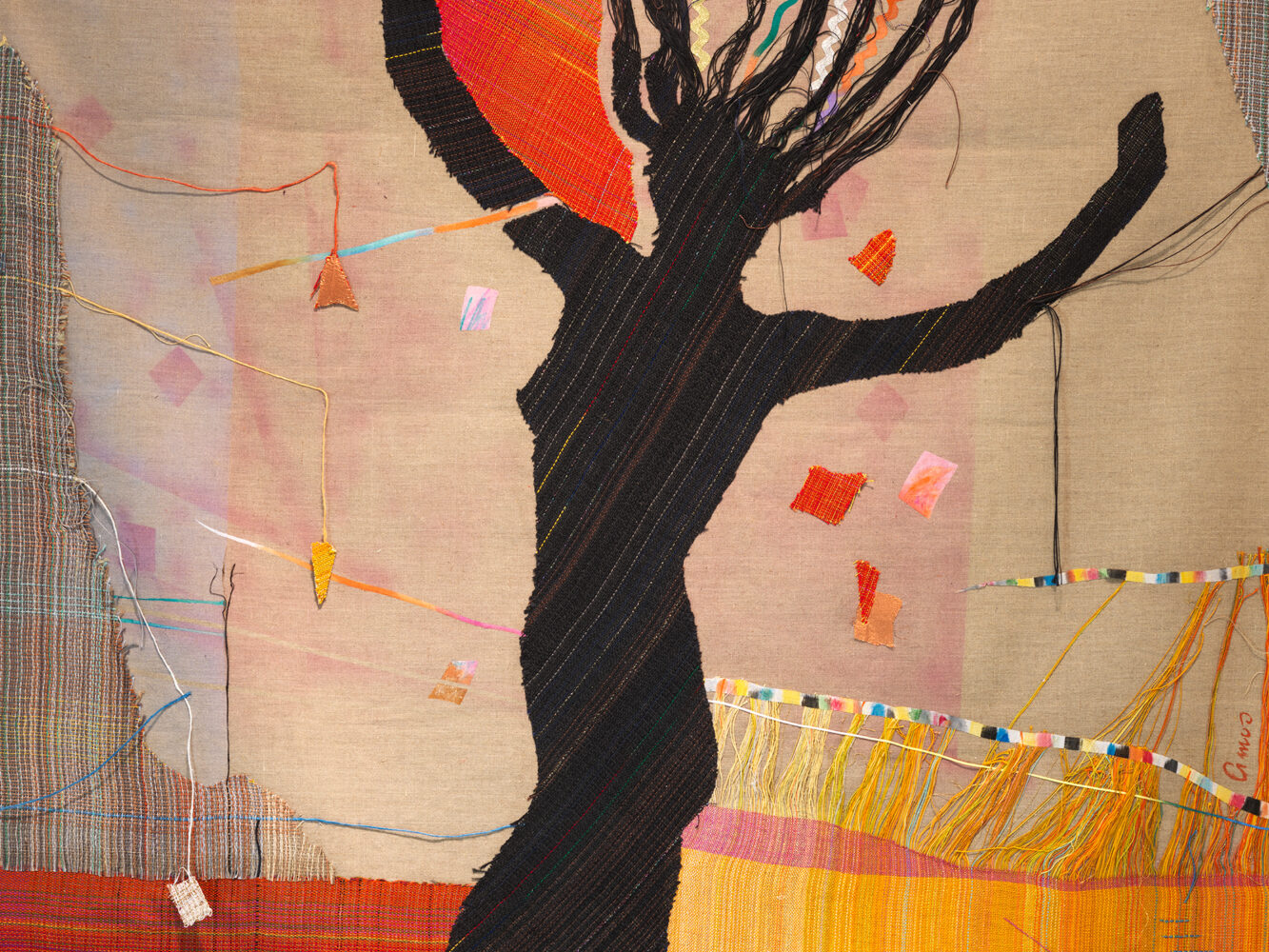Biography
Emma Amos (b.1937, Atlanta, Georgia; d.2020, Bedford, New Hampshire) was an American artist, educator and activist whose paintings and prints interrogated gender and racial inequity in the art world and in the United States more broadly. Amos’s works often included Black bodies—men’s, women’s, her own—to make a statement about the way people of colour are considered and consumed in American society. Amos was deeply concerned with memory; she used her own likeness to communicate an anxiety about the erasure of Black female artists in the art historical canon, while taking a defiant stance against this structure. ‘It’s always been my contention,’ Amos once said, ‘that for me, a Black woman artist, to walk into the studio is a political act.’
Amos was born to an upper-middle class, educated family in segregated Atlanta, a city at the centre of the Civil Rights movement in the 1940s and 1950s. Her family was friendly with Civil Rights leaders such as Booker T. Washington, W.E.B. Du Bois and Zora Neale Hurston. After studying painting and printmaking at Antioch College in Ohio and the Central School of Art in London, she relocated to New York City. There, she joined Spiral in 1964, an important African American collective that posited the goal of, ‘discussing and debating the political role of black artists and their work.’ Amos was the youngest and only female member of this group; she quickly became aware of the ingrained sexism in the collective, finding that the effort for Black representation often disregarded the art of women. Straddling the joint realities of racism and sexism in the art world, Amos had to forge her own spaces, her own spheres of influence. In the 1970s, Amos was urged to join the Heresies Collective by writer Lucy R. Lippard. As one of the few Black members of this group, her discussions of race within the feminist art movement were indelible. Heresies proved to be, as Amos once wrote, ‘the group I had always hoped existed: serious, knowledgeable, take-care-of-business feminists giving time to publish the art and writings of women.’ Amos later became an original member of the Guerrilla Girls, which formed in 1985 and promoted anonymous membership in an effort to highlight the ways in which women artists were underrepresented in museum collections and the commercial art world.
Amos’s work concerned itself with identity, historical record, and political activism throughout her nearly six-decade career. In the 1960s, she produced her vibrant and colourful Attitude paintings and prints, in which she depicted herself affecting confident poses. After having her children, the carefree nature of this series gave way to mature reflections of her newfound dual identity as both a mother and an artist. The work over the next decade engaged with Black bodies in motion: her Water Series depicted women in bathing suits, confronting racist stereotypes of Black people not knowing how to swim. Her Athletes and Animals series in the early 1980s juxtaposed Black men with exotic animals such as lions, cheetahs and crocodiles, highlighting the strength, beauty and ‘otherness’ of both. Her Falling Series of the 1990s, which depicts people free-falling through the air, articulated her anxieties surrounding cultural memory. She was extremely preoccupied by the concept of legacy, and feared that her contributions and accomplishments as an artist would necessarily be erased from collective memory due to her identity as a woman of colour. She addressed the racialized politics of relevance and memory by supplanting her body with that of Lucian Freud’s in Worksuit (1994), co-opting the prestige and attention he is afforded as a white male artist. Amos ‘puts on the white body’, as discussed by Shawnya L. Harris, ‘performing race in her paintings through that physical embodiment.’
Texture was fundamental to Amos’s practice. As an accomplished weaver, she often incorporated elements of collage into both her prints and paintings, and frequently repurposed Kente cloth and Dutch-wax fabrics as borders for her paintings (‘as if they defined the figures within’, wrote fellow artist Kay Walkingstick). As pointed out by Lisa Farrington, while the emerging Pattern and Decoration movement of the 1970s granted a long overdue appreciation for textile-based art forms, artists working with these mediums were still acutely aware of the hierarchies between art and so-called craft practices. Indeed, Amos once asserted, ‘I certainly knew not to admit that I was a weaver because people held it against me. It was just a smart thing to keep your mouth shut and not admit it’. It is difficult to consider Amos as a painter or a textile artist alone – ‘Amos does not so much mix media as move among them, rehearsing, translating, or experimenting with an idea across a series of distinct material practices’, Laurel Garber wrote. Amos also incorporated photo transfer in her later work, inserting 1940s photographs documenting the American South taken by her godfather, George Shivery. In many instances, Amos situated these photographs within American and Confederate flags, reflecting on the conceptual and historical significance of these nationalist symbols and making explicit the racist associations they now signify.
Works
-
![]() Three Ladies, 1970
Three Ladies, 1970 -
![]() Untitled, 1988
Untitled, 1988 -
![]() Without Feather Boa, 1965
Without Feather Boa, 1965 -
![]() Valued, 1999
Valued, 1999 -
![]() Secrets (4 parts), 1981
Secrets (4 parts), 1981 -
![]() Classic and Universal (diptych), 1995
Classic and Universal (diptych), 1995 -
![]() Curtains, 1989
Curtains, 1989 -
![]() Kicking up Heels, 1982
Kicking up Heels, 1982 -
![]() London Bridge is Falling Down, 1991
London Bridge is Falling Down, 1991 -
![]() American Girl, 1974
American Girl, 1974 -
![]() Dancing on the Streets, 1986
Dancing on the Streets, 1986 -
![]() The Root of All Evil, Art Against Apartheid, 1989
The Root of All Evil, Art Against Apartheid, 1989



































